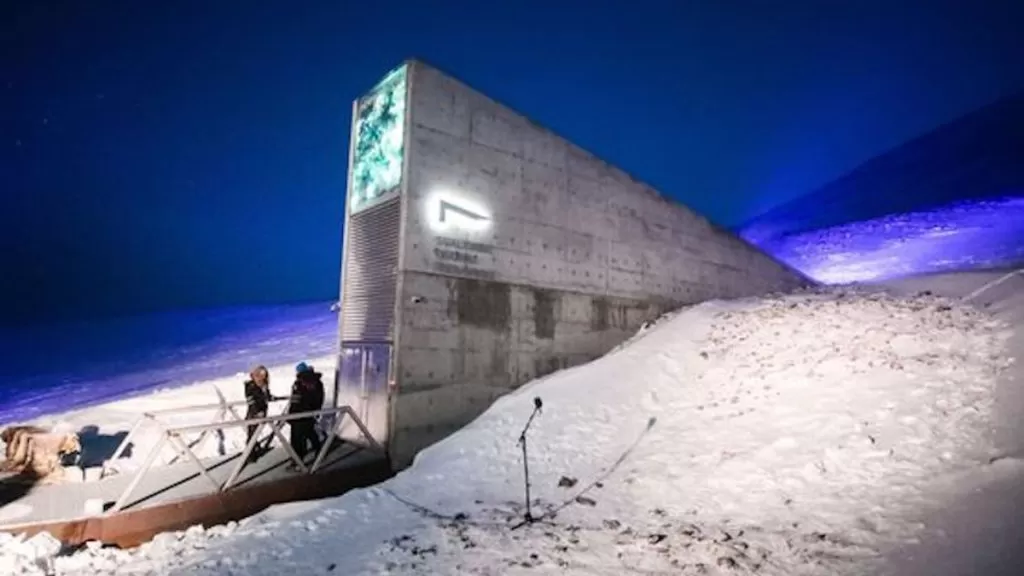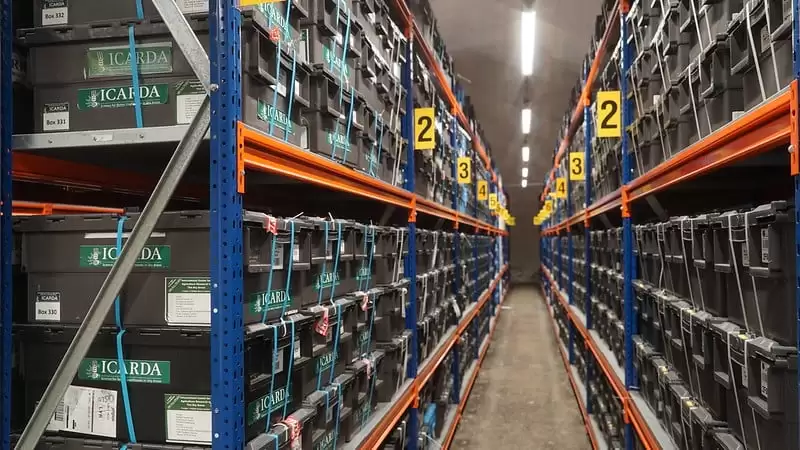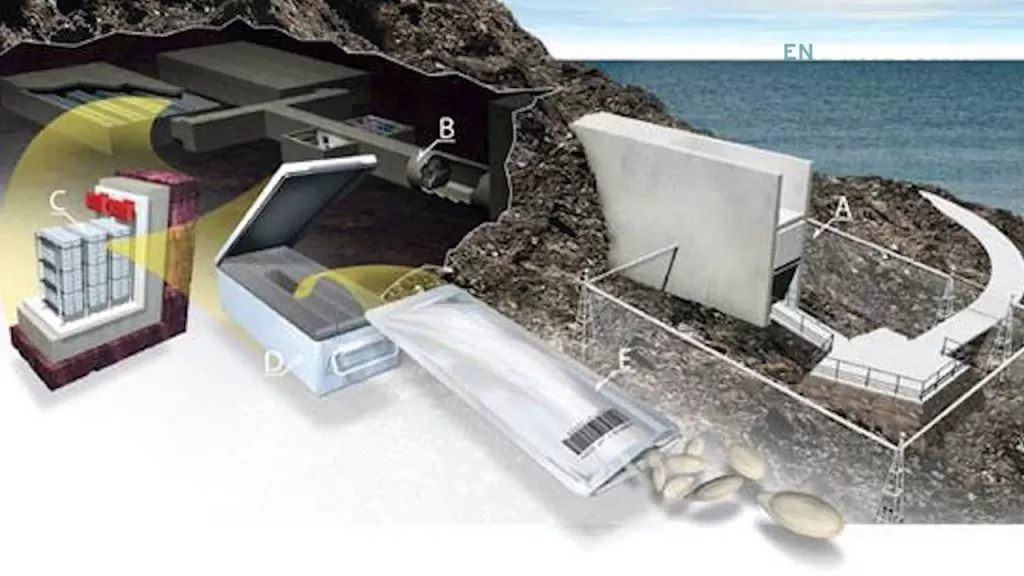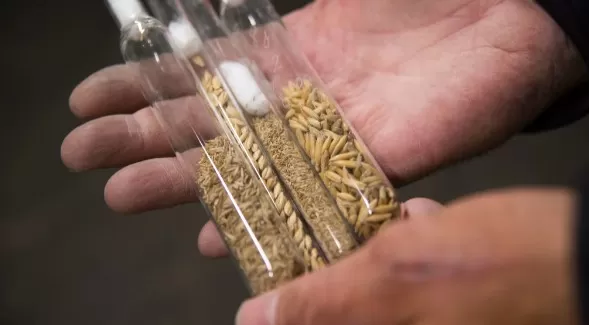Please note! this is Google translation.
Doomsday Vault: Humankind's Hope in the Event of a Nuclear Disaster
AuthorYassin Last updatedFebruary 23, 2023
The Doomsday Vault or Svalbard Global Seed Vault is a secure seed bank located on the Norwegian island of Spitsbergen near the town of Longyearbyen in the remote Arctic archipelago of Svalbard. The vault houses a variety of plant seeds in an underground cave.
In fact, the Svalbard Global Seed Vault acts as a safe deposit box but for seeds, not for money, as a copy of each seed is kept in the gene banks of all countries to be reproduced in the event of disappearance due to natural disasters, war conflicts or nuclear disasters.
This doomsday vault is a Norwegian contribution to the biodiversity of the planet and a clever way to ensure the world's food supply.
We can say that the vault is a security repository that protects 40% of the world's food diversity and contains nearly a million seeds from 5128 species from 249 countries.
A bunker is a type of cache that is built to withstand the passage of time and eventual natural or man-made disasters. The facilities are built on a massive concrete structure built for the purpose of 'safe storage'.
What is a doomsday vault

The Doomsday Vault or Svalbard Global Seed Vault is a repository where the seeds of thousands of crop plants from around the world are stored. The goal is to maintain some kind of "support" for all seeds on the planet. Thus in the face of an environmental, natural or even nuclear catastrophe, crop biodiversity will be safe.
It is not a gene bank that researchers or interested parties can turn to, but it is for national or regional gene banks to store their seeds there for replication or, more correctly, reproduction in case they are lost as a result of natural disasters or war conflicts. It works like a safe deposit box in a bank.
Due to the conflict in Syria, the International Center for Agricultural Research in the Dry Areas (ICARDA) in Aleppo in 2015 became the first genebank to retrieve seeds from their deposit in the Svalbard Global Seed Vault.
The vault building is owned by Norway and the preservation service is completely free for all countries. However, the seeds are the property of the genebank that deposited them there.
There are currently more than 1 million seed samples stored, and more than 6,000 varieties from 249 countries.
The idea of the Svalbard Global Seed Vault project

Nordic Gene Bank was launched in 1984 with the seeds of Scandinavian plants kept in an abandoned mine.
Because of the uncertainty of what would happen to genetic resources, the Bank could not be international. With the entry into force of the International Treaty on Plant Genetic Resources for Food and Agriculture in 2004, this is finally possible. Norway took the initiative to build the bank at a cost of approximately $9 million.
In February 2008, the Norwegian government opened the Svalbard Global Seed Vault, also known as the Doomsday Vault.
Svalbard is an island in northern Norway, 1000 km from the North Pole. Svalbard was originally chosen because it is a safe place, and it is also considered the last northern city in the world. It is one of the harshest places, with summer temperatures not exceeding five degrees.
The region is environmentally protected, with good infrastructure and efficient transportation and distribution procedures, with one of the northernmost airports in the world. Also, because it contains “permafrost,” the permanently frozen layer of soil that facilitates the maintenance of lower temperatures.
It is a repository of replicas of all unique seed species maintained by national, regional and international genebanks, research institutes and NGOs.
The Svalbard Bank holds the material in “black box” conditions, meaning the samples are owned by the state or genebanks that sent them in and it is impossible to copy the seeds, since only the owners have access to them.
Cellar storage capacity and maintenance conditions

The doomsday vault was built inside a mountain and at a depth of 130 meters and 130 meters above sea level, ensuring the dryness of the earth. The complex was built to withstand volcanic eruptions, earthquakes of up to 10 on the Richter scale, solar radiation, and in the event of a power outage, the permafrost acts as a natural coolant.
The Svalbard Global Seed Vault has a temperature of minus 18 degrees, but in the event of a power outage, the normal temperature range is between minus 3 and 5 degrees, allowing frozen seeds to be preserved. The vault has the capacity to store 4.5 million different seeds.
We can say, figuratively speaking, that our planet's DNA is stored in a doomsday vault. The largest number of stored seeds are varieties of rice, wheat and barley crops.
There are more than 150,000 different samples of wheat and rice, and nearly 80,000 samples of barley. About 50,000 varieties of sorghum, 40,000 varieties of turf beans, about 35,000 corn, and about 25,000 soybeans among many others.
In Svalbard, artificial seeds, like the patented ones sold by big companies, are not kept.
Thinking of future generations

In recent decades, many crops from bygone eras have been lost due to the advent of modern agriculture. A small batch of seeds adapted to large growing areas, new agricultural machinery, efficient fertilization and irrigation technology helped increase food production for a growing population.
At the same time, this resulted in a great deal of seed diversity being lost. The standardization of food production also makes biodiversity more vulnerable.
Genetic diversity presents opportunities to adapt plant production to different growing conditions, new diseases and pests, and more unpredictable weather conditions.
When the climate changes, it is critical that we still have access to a large pool of seed-eating genes. We do not know today exactly what genetic resources may be useful in the future. Therefore, a deposit is needed as rich as possible, and this is the main task of the so-called doomsday vault.
This work is organized through a unique global collaboration because all countries need seeds from other countries and regions. The Svalbard Global Seed Vault symbolizes global interdependence and global cooperation.
A place forbidden to the public

In the doomsday vault, security and maintenance are controlled remotely, and only a very small number of workers and some scholars are allowed to enter it, and visitors are not received.
The reason why the cellar is not opened to the public is because of preserving the safety of old and new grains and seeds until they are used, in case of wars or disasters.
Tourists often come to the rectangular entrance gate to take a selfie with Perpetual Repercussion, the entrance artwork that has become a global icon.
In numerous interviews published in the international press, Cary Fowler, founder of the Svalbard Global Seed Vault, described the vault as a Noah's Ark containing the world's largest collection of seeds, a treasure trove of genetic information essential to food security and sustainable cultivation of our planet and thus the maintenance of the cycle agricultural safe.